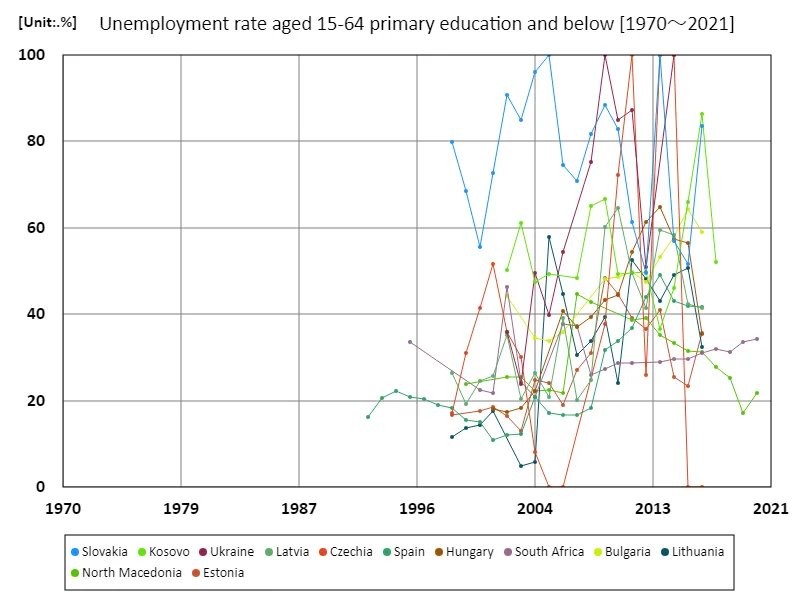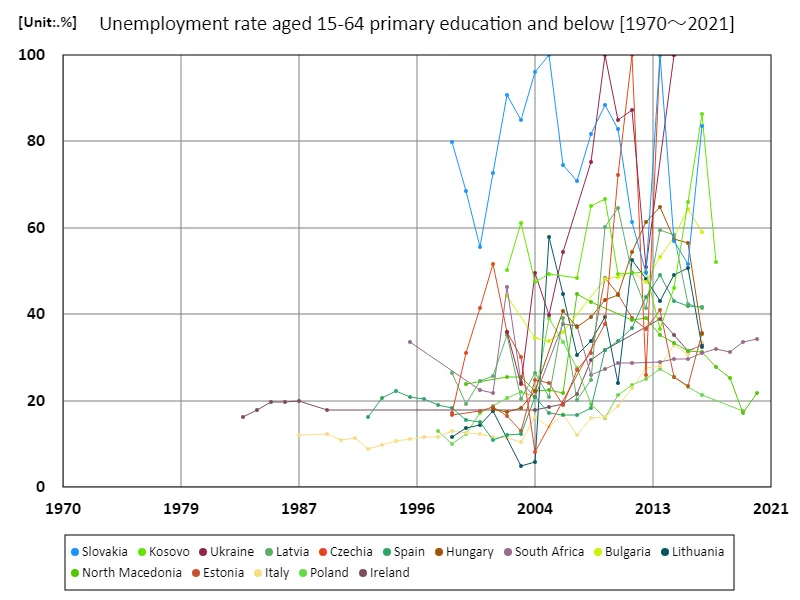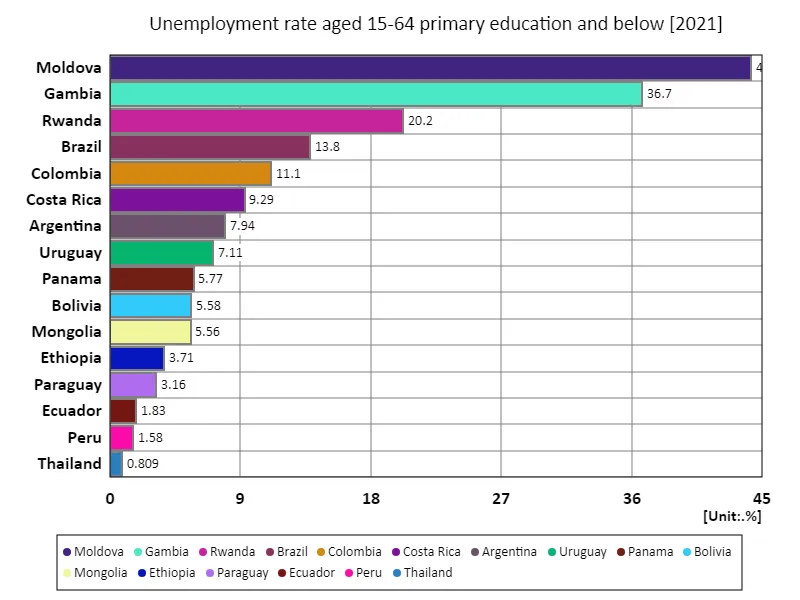- Abstract
- Unemployment rate for those aged 15-64 with primary school education or less (percentage of working age population with primary school education)
- Unemployment rate for those aged 15-64 with primary education or less (percentage of working-age population with primary education) (Worldwide)
- Unemployment rate for those aged 15-64 with less than primary education (percentage of working-age population with primary education) (Worldwide, latest year)
- Reference
Abstract
In 2020, South Africa recorded the highest unemployment rate for individuals aged 15 to 64 with primary school education or less, at 34.4%. Historically, countries with high unemployment among this group tend to face challenges like limited access to education, economic inequality, and underdeveloped labor markets. South Africa’s unemployment rate has been persistently high due to structural issues such as skill mismatches, slow economic growth, and a high reliance on industries that may not offer widespread employment opportunities. This trend highlights the need for comprehensive education and employment reforms.
Unemployment rate for those aged 15-64 with primary school education or less (percentage of working age population with primary school education)
From 1992 to 2020, Slovakia’s unemployment rate for those aged 15-64 with primary education or less reached its peak at 100% in 2005. As of recent years, it stands at 83.5% of that peak, reflecting a significant decrease in joblessness for this demographic. This trend suggests a gradual improvement in the labor market, likely driven by increased education levels, skill development, and economic diversification. However, the legacy of high unemployment in lower-education groups highlights ongoing challenges in bridging educational gaps and creating inclusive economic opportunities, particularly for those with limited qualifications.


The maximum is 100%[2005] of Slovakia, and the current value is about 83.5%
Unemployment rate for those aged 15-64 with primary education or less (percentage of working-age population with primary education) (Worldwide)
From 1983 to 2020, Slovakia’s unemployment rate for those aged 15-64 with below primary school education peaked at 100% in 2005. As of recent years, the rate stands at 83.5% of that peak, indicating a notable improvement. This decline reflects efforts to address educational gaps and invest in skills development, enhancing labor market access for lower-educated groups. Despite progress, Slovakia’s challenges remain, as individuals with limited education continue to face high unemployment. Long-term strategies focusing on education and labor market inclusivity are crucial for sustainable improvement.


The maximum is 100%[2005] of Slovakia, and the current value is about 83.5%
Unemployment rate for those aged 15-64 with less than primary education (percentage of working-age population with primary education) (Worldwide, latest year)
In 2021, Moldova had the highest unemployment rate for individuals aged 15-64 with below primary school education, at 44.2%, significantly above the global average of 11.1%. This stark contrast highlights the economic challenges faced by lower-educated groups in Moldova, where limited access to education and job opportunities contribute to high unemployment. Globally, the total rate of 178% suggests wide disparities, with many countries successfully reducing unemployment through education and labor market reforms. Continued focus on skill development and inclusive economic policies is essential to lower unemployment for this group.


The maximum is 44.2% of Moldova, the average is 11.1%, and the total is 178%



Comments